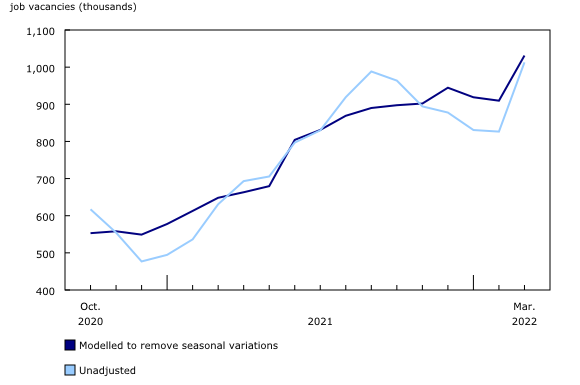Canada Reports Over 1 Million Job Vacancies
Job vacancies in Canada hit a record-high of 1,012,900 in March 2022. That’s more than the previous record of 988,300 in September 2021. There was an increase of 186,400 vacancies between February and March 2022. The job vacancy rate, which measures the number of vacant positions as a proportion of vacant and filled positions, matched the record high of 5.9% also observed last September (not seasonally adjusted).
Vacancies increased by more than one third in both accommodation and food services as well as retail trade. Employers in accommodation and food services were seeking to fill about 158,100 positions, while retail employers had some 109,200 vacancies.
There were record levels of job vacancies in health care and social assistance as well as construction.
The new High Potential Individual visa is a Canadian work permit that allows individuals who have been identified as having high potential to live and work in Canada.
As the Canadian economy has strengthened, employers are increasingly facing skill shortages, especially in sectors like construction, health care, and manufacturing. The new high-potential individual visa program will allow employers to recruit and hire workers from abroad with specific skillsets that are in short supply in Canada.
The idea behind this program is that employers can identify potential hires who would be a great fit for their company, but who may not have Canadian citizenship or permanent residency. This way, they’ll be able to fill positions more quickly than they would be able to do otherwise.
Job vacancies were up in all provinces. The largest month-over-month increases were observed in Saskatchewan, Nova Scotia, Newfoundland, and Labrador. The number of job vacancies reached a record high in Nova Scotia, Manitoba, Saskatchewan, and British Columbia.
There was an average of 1.2 unemployed people for every job vacancy in March, down from 1.4 in February. The decline coincides with a record-low unemployment rate of 5.3%, and a record-high core-age labor force participation rate of nearly 87%.
Labor shortages were particularly felt in Quebec and British Columbia, each having an unemployment-to-job vacancy ratio of 0.8. A lower ratio indicates a tighter labor market. The highest was 4.3 observed in Newfoundland and Labrador.
Job vacancies had fallen for five consecutive months from September 2021, a function of seasonal demands. In Canada, economic activity increases in the spring and summer and declines in the winter.
Statistics Canada is expected to release April 2022 job vacancy data on June 24. Job Vacancy and Wage Survey results from the first quarter of 2022 will be released on June 21.







